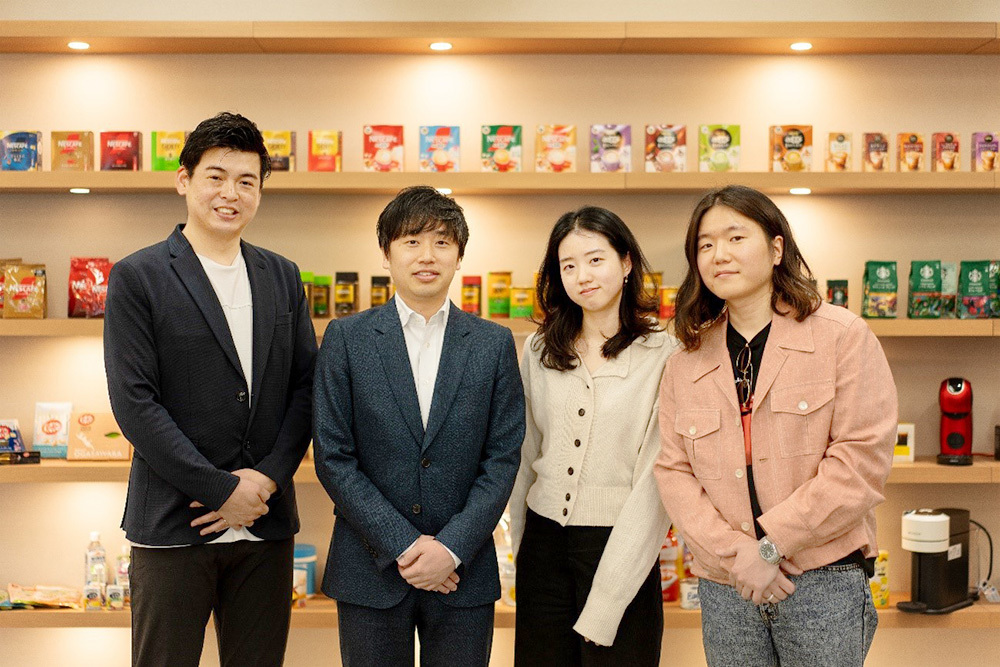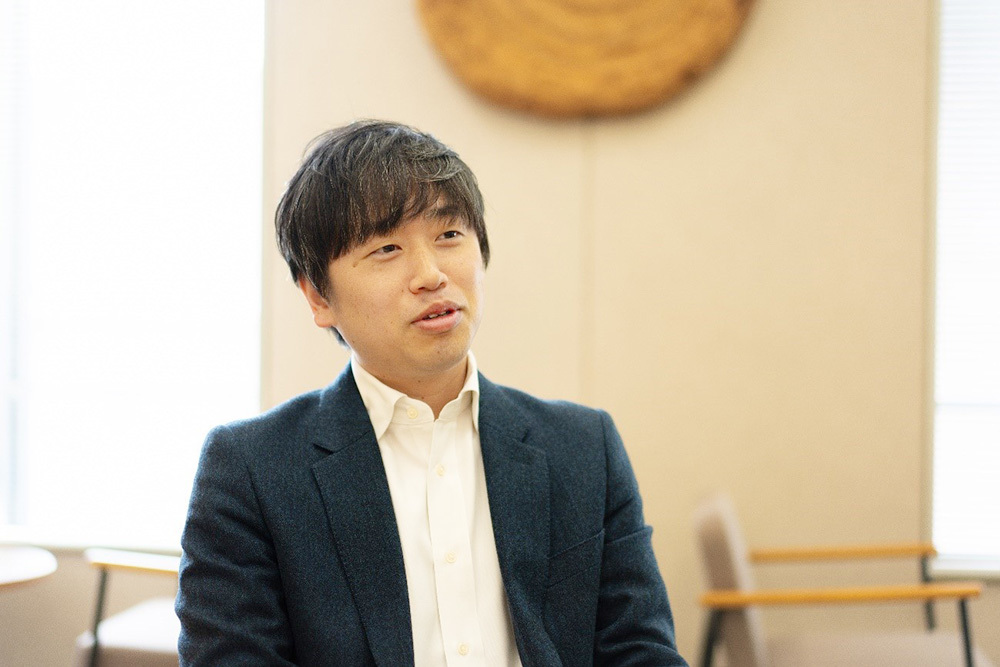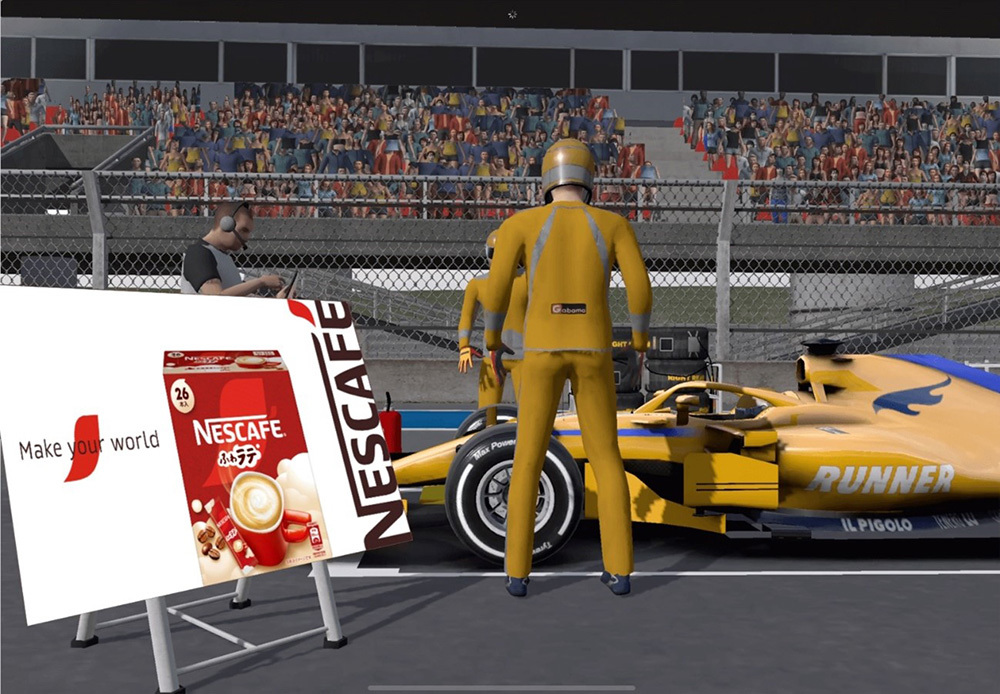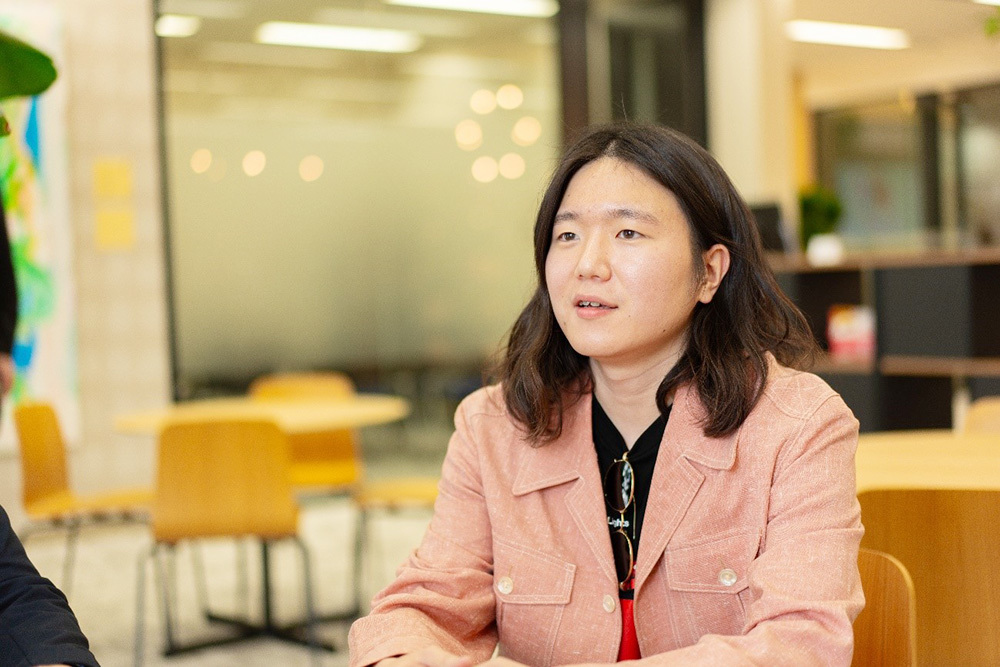
From left: Hirotsugu Doi (GumGum Japan), Yoshiki Kosakai (Nestlé Japan), Ye-Won Chang (GumGum Japan), Joon-Soo Lee (GumGum Japan)
A fresh breeze called brand advertising is beginning to blow through the in-game advertising market, currently dominated by acquisition-focused reward ads placed by game companies. Why are brand advertisers starting to pay attention to in-game ads? And how do in-game ads function within branding strategies? We spoke with Nestlé Japan and GumGum, both engaged in pioneering initiatives. (Sponsored by GumGum Japan)
Failing to consider game advertising means missing out on opportunities
──Please introduce yourself.
Mr. Kosakai: My name is Yoshiki Kosakai, and I serve as Manager of the Media Planning Department at Nestlé Japan. My primary role involves collaborating with advertising agencies to design optimal media plans.
As reaching younger audiences through TV commercials has become increasingly difficult, opportunities to utilize digital channels have grown. However, the user experience varies significantly depending on the advertising platform. We are required to conduct media planning that prioritizes how users will perceive the ads, while also addressing each brand's specific challenges and communication objectives.
Mr. Doi: I'm Hirotsugu Doi, Sales Director at GumGum Japan, a contextual advertising platform. We've had the pleasure of working with Nestlé for a long time and have built a team structure, including myself, to support them.
Mr. Joonse: I'm Lee Joonse, Manager of the Advertising Operations Department at GumGum Japan. While we handle both fully managed advertising operations through our proprietary platform and programmatic delivery via DSPs, we manage Nestlé's in-game advertising through the latter approach.
Ms. Ye-Won: I am Jang Ye-Won, Account Manager at GumGum Japan. I handle campaign scheduling, creative production management, and reporting, while also serving as the project manager for in-game advertising.
──Could you tell us about the background leading to Nestlé Japan's decision to run in-game advertising?
Mr. Kosakai: We recognized that games occupy a significant portion of consumers' free time, and we constantly discussed internally how to effectively approach that audience. There are definitely consumers we can only reach through games.
We concluded that excluding communication through games as an option would lead to missed opportunities. Consequently, our company has also pursued initiatives like sponsoring esports and collaborating with game content. In our efforts to have our products featured during live streams by game streamers, we witnessed an unexpectedly high number of viewers and comments, clearly demonstrating the high level of engagement among users.

Mr. Yoshiki Kosakai (Nestlé Japan)
The new "Make your world" concept for Nescafé, refreshed in autumn 2023, places emphasis on having younger consumers perceive Nescafé as "their own brand." We considered that GumGum's in-game advertising could be leveraged for this.
A non-intrusive approach distinct from conventional in-game ads
──Please explain the overview of GumGum's in-game advertising.
Junsu: It's a relatively new advertising product we just launched in 2023. It differs significantly from traditional in-game ads like interstitials or overlays. We use a non-intrusive ad format that seamlessly blends into the game screen background without disrupting the user experience. There's no page transition after clicking; you can think of it as similar to a billboard ad in the real world.

Nescafe in-game advertising example. Source: GumGum Japan
A key feature is that billing occurs only for viewable impressions that meet strict criteria, such as how many seconds the in-game ad space appeared on screen and what percentage of the screen it occupied.
Mr. Ye-Won: Regarding game media serving as ad placements, we naturally exclude games containing content that could damage brand image—such as violent scenes or storylines—from our network to ensure brand safety.
Furthermore, we exclusively use premium media with an average Google Play rating of 4.3 or higher and ranked within the top 100 on the Japanese Apple Store. We cover approximately 50 media across genres like sports, action, simulation, and racing.

Lee Joon-soo (GumGum Japan), Jang Ye-won (GumGum Japan)
──Please tell us about the effectiveness of in-game advertising in this campaign.
Mr. Kosakai: This campaign aimed to introduce the "Nescafé" brand to younger audiences and foster familiarity with it. Through brand lift surveys, we confirmed a corresponding shift in attitudes.
While it's difficult to compare directly with other digital advertising channels using different targeting settings, we view the development of in-game advertising as a new channel positively.
──A simple question: Do users deeply immersed in a game actually pay attention to ads displayed in the game's background?
Mr. Kosakai: This campaign confirmed sufficient brand lift effects. However, to understand in greater detail what types of ads work and how, we should continue verifying through ongoing brand lift surveys, just as we do with other ads.
Ye-won: For this product, we implement viewable impression billing, which only occurs when several strict metrics indicating the user actually saw the ad are met. We aim to prove advertising effectiveness through this framework.
Mr. Doi: Past studies compared the impact of physical billboards at real pro baseball stadiums versus digital billboards within games. While the broadcast billboards appeared more frequently and for longer durations, the in-game ads were remembered better. We've also conducted proof-of-concept experiments measuring attention for in-game ads and aim to implement optimization based on attention metrics in the near future.

Hirotsugu Doi (GumGum Japan)
Focusing on Achieving a More Advanced PDCA Cycle
──Branding campaigns through in-game advertising seem like quite an advanced initiative in the Japanese market, don't they?
Mr. Kosakai: I believe games are no longer just a niche hobby; they're becoming integrated into daily life just like other media. I fear the risk that brands could decline without ever communicating with consumers they could have reached through games, simply because they ignored this avenue due to a lack of case studies.
Ye-won: Our network alone holds tens of millions of ad inventory units, with a 50:50 male-female user ratio. Gaming users are no longer a niche demographic.
Junsu: However, not just for in-game ads, the Japanese market tends to be somewhat CPC/CPA-centric, with a generally low awareness of branding initiatives. Our in-game ads are inherently non-clickable, so they may be somewhat incompatible with this CPC/CPA-centric approach.

Lee Junsu (GumGum Japan)
I understand that advertising agencies, while adhering to Japanese market practices, are often overwhelmed by daily operations and struggle to find time for new, unique media or advertising formats. Taking these challenges into account, we aim to build a better advertising delivery environment.
──How do you see in-game advertising evolving going forward?
Mr. Kosakai: Since the gaming population is expected to keep growing, we hope to see further expansion of the ad network scale. With a broader network, we anticipate being able to optimize ads at a finer granularity—selecting placements that align well with our brand and moments when users are more receptive to ads.
Mr. Doi: We're gradually gaining the ability to select media outlets. As Mr. Kosakai mentioned, the next step is enhancing functionality to enable the PDCA cycle for ad operations. If we can establish this environment, branding initiatives through in-game advertising should gain momentum in the Japanese market as well.
<Post-Interview Notes>
Advertising media within game content, which occupies a significant portion of people's free time, is gaining attention. However, few in-game ads prioritize the perspective of "advertising acceptability."
The in-game brand advertising utilized in this article enables ad exposure without compromising the gaming experience for younger users, and its effectiveness was confirmed through brand lift surveys.
Moving forward, while planning digital advertising, we will actively support the development of such advertising channels and pioneering initiatives, aiming to create new touchpoints between brands and users starting from digital advertising and campaigns.
(Dentsu Digital Inc., Kohei Ishikawa)










